Getting real for doublehanded transat
Published on November 6th, 2017
(November 6, 2017; Day 2) – If the first night of the 13th Transat Jacques Vabre was tough, the second night will wash away the memory in brutal fashion for the 37 boats and 74 crew, with winds gusting up to 45 knots and 5-metre waves as they begin to cross a cold front off Cape Finisterre from this evening.
In a different way to the trilas of negotiating ridges of high pressure, as the fleet did today, the big conditions test seamanship, stomachs and partnerships to destruction. As Phil Sharp (Imerys Clean Energy) said: “it’s the calm before the storm” or as Jean-Luc Nélias (co-skipper, Sodebo Ultim’) put it: “We’ve gone from glasses of champagne to buckets of water in the face.”
The race has started with record-breaking weather forecasts but these are boat-breaking conditions where it is more about seamanship and survival rather than speed.
The added dimension in this bi-annual double-handed race is that rather than facing alone what the North Atlantic in November can throw at you, as most of the solo sailors in the fleet are used you, here they have a partner. Can you really rely on the sailor beside you? If you can, you will go faster and stay safer. If you cannot, you cannot not rest while you hear them fumbling on deck.
The upwind conditions will be tough for all four classes, and momentarily negate much of the advantage of the foiling boats across the fleet, even that of the 32-metre long leader in the Ultime class, Edmond de Rothschild.
Many and varied are tests of the Transat Jacques Vabre. Although they appear to have avoided the worries of Sam Davies (Initiatives-Cœur) about fishing boats filling the Channel for scallop season, not everyone avoided the lobster pots nearer the coast.
Britain’s Miranda Merron on Campagne de France was speaking for many in explaining their decision that discretion was the better part of valour: “Some of our classmates opted to go rock-hopping off Barfleur,” she wrote this morning, “but given the conditions, there is no way out if anything goes wrong, it being a lee shore. And there are plenty of lobster pots. We have played it safe and stayed further offshore, which means pushing foul tide. No regrets.”
Colombre XL, one of the two all-Italian duos, found out exactly what Merron meant.
“At Barfleur we got caught on a lobster pot,” Massimo Juris said. “The boat suddenly stopped. We immediately let go of the sails and eventually had to drop them with great difficulty, with the wind and current from behind. We tried to hook the rope that was holding us but the buoy was too far and the rest of the line too deep against the keel. So Pietro (Luciani) prepared himself for a night dive. He wore the wetsuit and also the survival suit. The idea was to swim to the buoy and cut the rope underneath. But when everything was finally ready we got untangled and the boat started to drift free.”
The episode cost them an hour, which equated to 10 miles on the ranking. On the plus side, Juris knows better than ever that Pietro is a man he can count on in a tight fix.
Class40: between a rock and a racing current
What a battle. Just 15 miles between the first 7 boats with newly-launched boat Aïna, Enfance & Avenir (Chappellier/Le Vaillant) leading and Britain’s Sharp in fourth and Miranda Merron (Campagne de France) in fifth. The leading Class40s could not really rest as they crossed the ridge of high pressure as they has to protect themselves from the strong current, which was reported as being up to 10 knots. They will reach the front tomorrow.
IMOCA: What a battle II
Just 13 miles between the top eight. Des Voiles et Vous, SMA, St-Michel Virbac lead a fleet, which slowed by the ridge this afternoon, is slowly accelerating. The SMA duo (Meilhat / Gahinet) have given nothing to the foilers. But the more upwind conditions in big seas suit them. As soon as they pass the front (around 01:00 UTC), the foilers should make their reaching speed count.
Multi50: Arkema set the pace
Lalou Roucayrol and Catalan’s Alex Pella on Arkema managed the difficult first night of sharp downwind racing expertly and stayed true to their pontoon plan of a quick start to be best placed for the front. The Multi50s are all heading due west, towards the front they will reach in the evening. All except Réauté Chocolat (Tripon / Bernaud) who have opted for a safer southern route at the cost of miles in what will be the toughest boat in the fleet to manage these conditions.
Ultime: Maxi Edmond de Rothschild escaping
After a crazy night with speeds of 40 knots, the Josse / Rouxel duo is making more than 20 knots, over 20 miles ahead of Sodebo Ultim’ and beginning to feel the grip of the cold front.
Technical stop
Eärendil (Class40): after breaking the hoist line for the staysail, Catherine Pourre informed the Race Office that she will stop at Camaret-sur-Mer (Brittany) tonight (around 24:00) to repair it. According to the Sailing Instructions, she will not be able to leave until four hours after her arrival.
Race details – Entry list – Tracker – Facebook
13th edition of the Transat Jacques Vabre
• Biennial doublehanded race now 24 years old
• Two founding partners: the city of Le Havre and brand Jacques Vabre
• Four classes on the starting line: Class40, IMOCA, Multi50, and Ultimate
• Starting November 5 in Le Havre (FRA) for the 4350nm course to Salvador de Bahia (BRA)
n 2013, and again in 2015, all the boats flew past Salvador de Bahia, sails filled by the trade winds of the south-east, under the tropical sun…One imagines that they dreamt of finally finishing their race in All Saints’ Bay. In 2017, it will be a reality!
After the start line and a coastal route as far as Etretat, the duos will head towards Brittany to get out of the Channel as quickly as possible, where the currents are powerful, cargo traffic dangerous, and a lot of attention is needed.
They will then enter the Bay of Biscay, where, depending on the position of the Azores anticyclone, they will either find downwind conditions, easy and fast, like for the last Vendée Globe, or tougher and slower conditions in the passage of some late autumn depressions.
Four hundred miles later, having passed Cape Finisterre, the northern Portuguese trade winds should propel them quickly towards Madeira, and then the Canary Islands, where awaiting them will be northeast trade winds, which could be strong or weak.
Passing close to the Portuguese coast, or offshore, to the east or west of the Canary Islands and then the Cape Verde islands – you have to choose the right options. The next goal is to establish your position for the crossing of the dreaded Doldrums, located a few degrees north of the equator. At this time of year, it can change position very quickly, extend or contract, because even after carefully studying of the satellite images, sudden squalls can develop and stall the competitors under a good shower without wind for hours.
This passage is crucial in the Transat Jacques Vabre racecourse. Further west… Further east… After the calms, rainy squalls, with too much or no wind… The final goal is to get out well-positioned enough to benefit first from the southeast trade winds and to cover the remaining 850 miles towards the finish,passing along the islands of Fernando de Noronha, along the coast of Brazil and finally heading northwest into the magnificent All Saints’ Bay.
This transoceanic racecourse from North to South is more demanding than a transat from East to West; it requires the skippers to have sharp tactical and strategic qualities, good weather training, to be in excellent physical condition to maintain a sustained speed in the trade winds… And to have a lot of patience to cross the equator.
Source: Transat Jacques Vabre


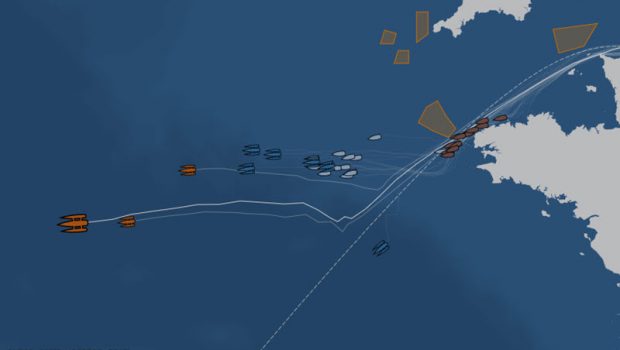

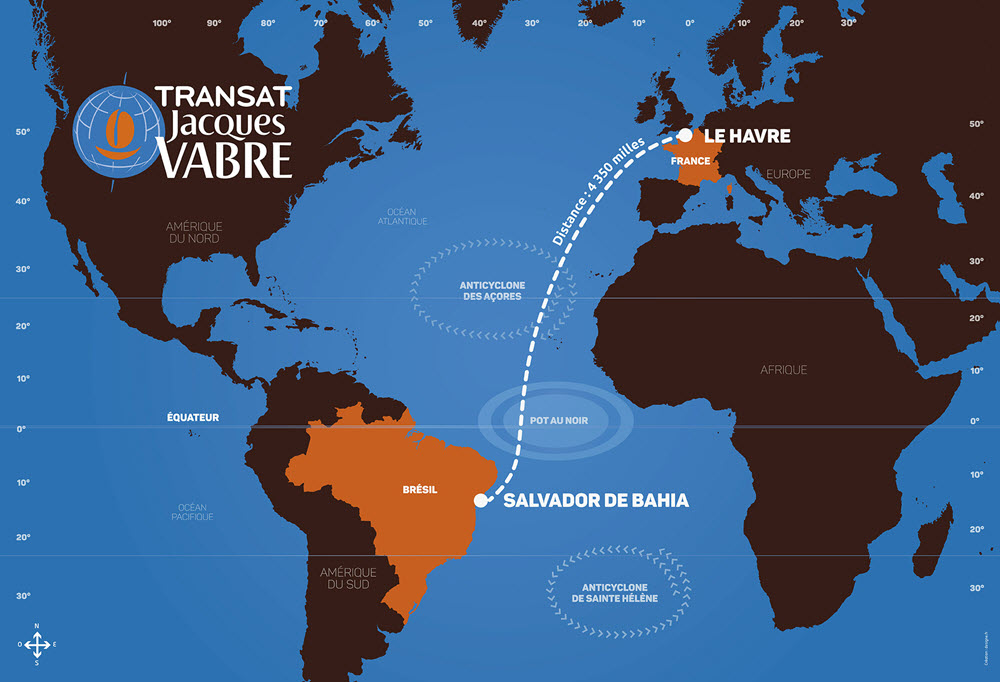

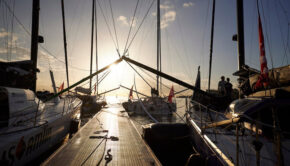
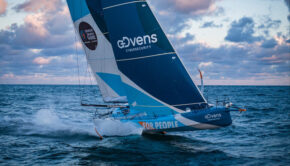
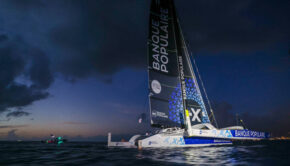
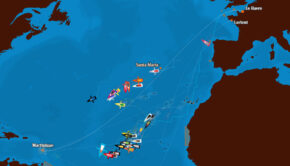
 We’ll keep your information safe.
We’ll keep your information safe.